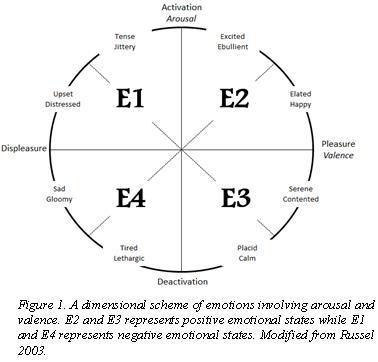The function of emotions

Emotions can be defined as short-lived but intense affective responses to an event. Emotions are the result from the involvement of behavioural, neurobiological, physiological, subjective and cognitive factors and they differ from both senstaions and feelings. Sensations is more or less only a physical consequence, such as heat, and feelings designate internal states, which have no connection with external reactions.
The existence of animal emotions is still debated but emotions are thought to have arisen through evolution. Responding in a certain way during repeated encounters with a situation may be beneficial over time. Experiencing pain make you avoid the same situation again while experiencing pleasure instead make you seek out the same situation again. The ability of expressing emotions may not only help an individual in certain situations but it may also help other individuals to change their behaviour.
Positive emotions and the heart
The sympathetic (SNS) and the parasympathetica (PNS) nervous systems are a part of the autonomic nervous system (ANS). These two nervous systems act as control systems for neural activity and regulates a various number of organs within an organism such as eyes, blood vessels and the heart. The relative activity level of the PNS and SNS can be seen as an indicator of the physiological state of an organism and this state depends on both homeostasis and emotions.
The heart rate (HR) is an outcome of the interaction between SNS and PNS and due to this interaction, HR is inconstant and varies from beat to beat. This beat to beat oscillation is what we call heart rate variability (HRV).
By investigating the HRV, the interaction between SNS and PNS can be identified. This interaction is thought to be a physiological marker for emotions so by distinguishing it, we might be able to identify and assess both positive and negative emotions.
Responsible for this page:
Director of undergraduate studies Biology
Last updated:
05/04/13
